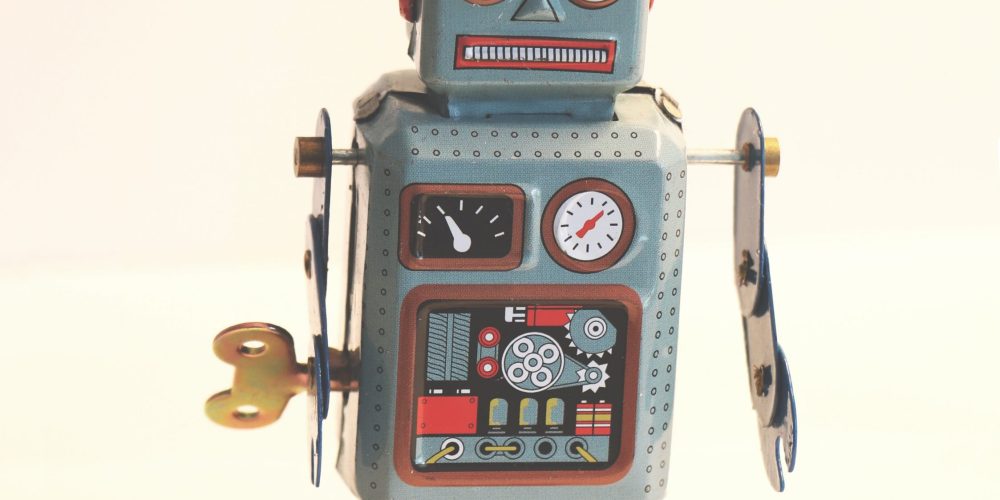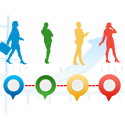Introduction: Looking to the Future of SaaS
It should surprise no one that Software as a Service, or SaaS, has become huge over the last decade. SaaS like Salesforce and ONE Platform have taken the world by storm, giving companies of all kinds and sizes ready-to-go, cloud-based platforms that make their lives easier. In 2019, SaaS revenue reached $148 billion, a staggering amount. However, with the market as big as it is, companies aren’t resting on their laurels; in fact, there are plenty of promising trends that will help drive the future of SaaS. Over the course of this series, we’ll put each one under a spotlight to see what we can learn from them.
In this entry, we’ll be looking at the different types of chatbots – but not just any chatbots. We’ll be taking a look at AI-powered chatbots, along with more typical rule-based chatbots.
What Is a Chatbot?
If you’ve been on the internet in the past decade or so, you’ve likely come across some chatbots. Though some exist only for the novelty factor, in recent years their main use has been in customer service. It’s a use-case that makes perfect sense – why task your employees with answering potentially repetitive and similar questions all day when you can instead automate the process? Chatbots are a win-win for customer service, as customers get consistent and unified answers to their questions, and employees have their time opened up to do other important tasks. But, how exactly do these chatbots work?
Well, first, we have to recognize there are different types of chatbots out there in the world of customer service. The two main categories are Rule-based chatbots and AI chatbots.
Rule-Based Chatbots
Rule-based chatbots do exactly what they say on the tin– they’re relatively simple programs that can recognize certain keywords that are inputted by the customer. For example, if a customer tells one of these chatbots their order number, the chatbot can then look up the corresponding order. This type of chatbot needs to be programmed ahead of time to recognize the right rules and keywords.
This level of control can be a benefit, however. Though you need to program in the kinds of interactions you want, this also means you can control the direction of the conversations your customers have with the chatbot. Because the chatbot only recognizes certain keywords, conversations are inherently “on skates,” so to speak. In fact, these chatbots can prompt for specific answers, allowing for even more control. You can make sure that customer conversations end up in the correct place.
This doesn’t allow for a lot of flexibility or nuance, however. That’s where AI chatbots come in – and why they have everyone so excited.
AI Chatbots
AI Chatbots are, perhaps unsurprisingly, a little more complex. They aren’t just input-output machines that recognize certain rules and keywords and respond with pre-baked answers. Instead, they can process language to give answers based on their understanding.
But how, exactly, does that work? What does it mean for a chatbot to be AI?
It’s complicated, and a deep dive into the technology that underpins these chatbots would probably be a bit too ambitious for this blog. However, the basic principles are fairly easy to understand. The foundations of AI chatbots are deep learning and natural language processing, or NLP. Though these might sound like far-out sci-fi terms, they’re both well-studied and well-implemented.
NLP allows these chatbots to understand questions and inquiries from customers, whether or not that input follows certain forms or includes certain keywords. This is, of course, easier said than done, given the complexities and subtleties of language, but the technology continues to improve and has seen serious improvements over the years. This works in tandem with deep learning in order to teach chatbots how to understand language.
Deep learning allows AI chatbots to, well, learn. Basically, chatbots are fed input by programmers and, using NLP, “learn” how to respond properly. Over time, they’ll understand how best to parse the input and output a proper response. And, once they’re deployed, they’ll continue to “learn” based on how customers interact with them.
This means that not only are AI chatbots more flexible, but they’re also able to feel more personalized to each customer, too. It’s clear that they aren’t just running through a list of canned responses; they’re actually listening and answering, something like a real person would.
Conclusion
Now we know what chatbots are. But, why would you need one? Well, besides getting the chance to usher in our AI future, they have a lot of practical benefits as well. These chatbots can help customer service teams get through more customer service requests in less time, freeing them up for different, more important tasks. Chatbots can also automate the process of responding to repetitive requests. Instead of answering hundreds of nearly-identical customer emails, chatbots can make quick work of it instead.
The future for the world of SaaS is bright, and there are several promising developments in the works. Hopefully, you’ve enjoyed this deep-dive into one of them: chatbots. Who knows what we’ll look into next?
Are you ready to put the power of SaaS to work for you?
ONE Platform solves the complex infrastructure that many businesses struggle with – saving you time and money!
Reach out to us to explore how ONE Platform can grow your business.
Email us at [email protected] or to talk with an expert call 502.272.0170



![40+ Questions When Building an eCommerce Site [Free Checklist]](https://gooneplatform.com/wp-content/uploads/cache/images/drew-williams-scaled/drew-williams-scaled-4171399998.jpg)







